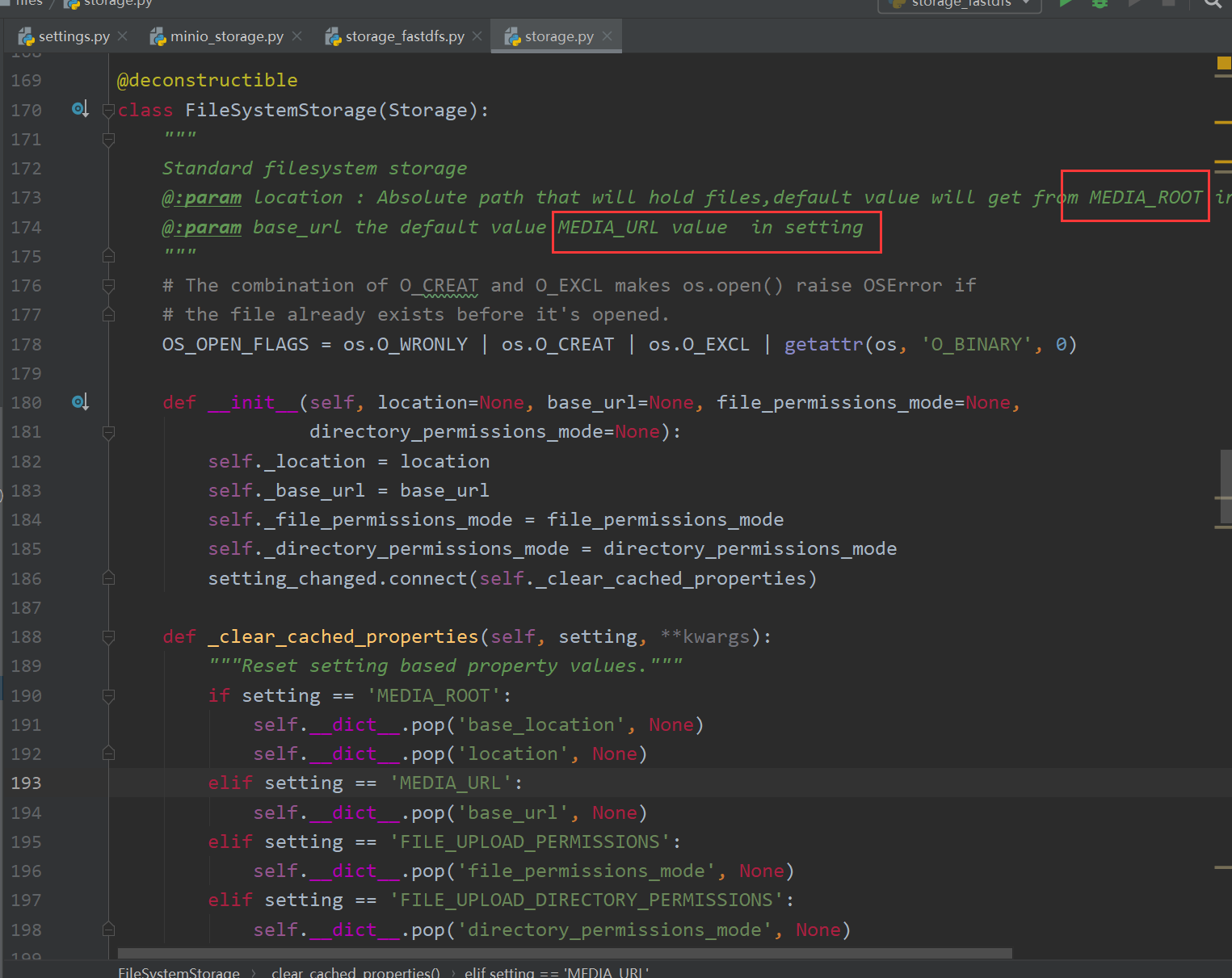官方文档介绍:
https://docs.djangoproject.com/en/3.1/ref/files/storage/
源码解读:
from django.core.files.storage import FileSystemStorage

如果定义模型ImageField()
img=models.ImageField()

如果上传图片需要安装Pillow
pip install Pillow
设置
1、首先在settings.py中定义MEDIA_ROOT与MEDIA_URL。例如:
MEDIA_ROOT = os.path.join(BASE_DIR, "files")
MEDIA_URL = "/files/"
files可以是项目根目录的任何一个文件夹
2、在urls.py的urlpatterns中,设置访问文件的url
from django.views.generic import TemplateView
url(r'^files/(?P<path>.*)$', serve, {"document_root": settings.MEDIA_ROOT})
?P<path>代表这一块的内容将作为参数path传给serve方法
serve方法是django自带的处理静态文件的方法
document_root是必须提供的文件位置
注意如果文件放在url注册的document_root之外,前端是不能访问到这些文件的
models.py
file = models.FileField()
-
定义upload_to="background/"
表示上传的文件将会存在$MEDIA_ROOT/background/下
-
ImageField和FileField实际上是CharFields,所以可以设置blank=True
serializers.py
正常写一个ModelSerializer
class FileSerializer(serializers.ModelSerializer):
class Meta:
model = File
fields = "__all__"
效果
写完view中的逻辑和注册路由后,访问对应的接口可以看到FileField字段是一个上传文件的按钮
上传文件后,该字段会返回可以访问文件的url